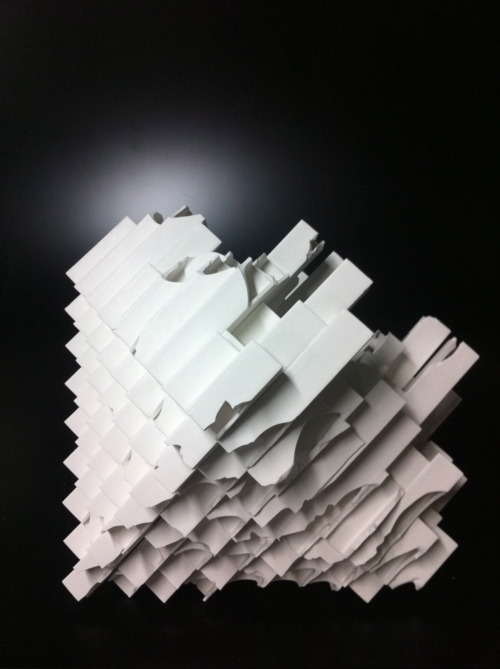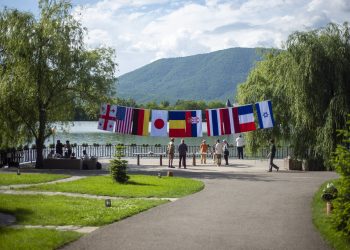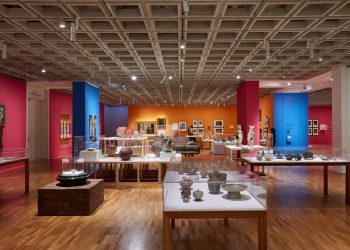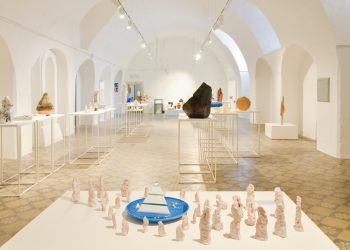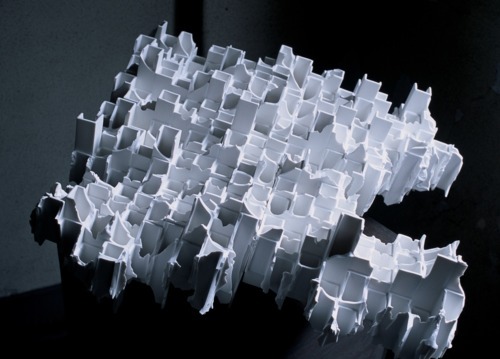
In your career as a ceramic artist, you took the challenge of using white porcelain in constructing complex geometrical systems. Tell us more about the motifs of your work.
I want to make people feel the passage of time over my pieces. When people see the remains of a culture or decayed buildings, they evoke special emotions. I want to express not only the ruins themselves, but also the atmosphere surrounding them and their strong presence. In other words, I want the audience to feel exactly how I felt when I looked at the destroyed buildings and ruins.
In what techniques do you usually work and what materials do you use?
The pieces are made out of porcelain clay. I make many hollow square tubes with slip casting and compose them before they get dry. After the biscuit firing, I apply the glaze and put them into the kiln at 2264 (F). I use the electric kiln for my white pieces.
Time is something you’ve embraced when constructing (or deconstructing) your works. What’s your works’ relation with time?
The geometric dense squares represent man-made buildings, and I considered that the pieces might be able to embrace time if I break them because the decayed geometric construction might evoke us about our far future. Since the color of white shows the lights and shadows clearly and dramatically, it maximizes the pathos and emotion of the modern ruins.
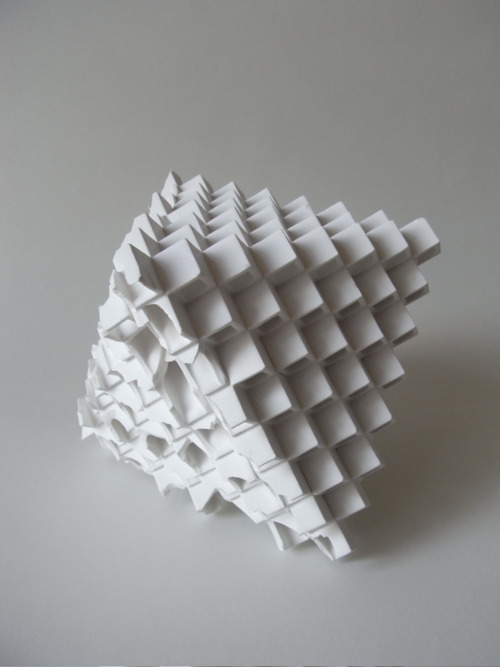
Modern Remains, 2010, Glazed porcelain, 8” x 8” x 6 1/2” – View his works
You are inspired by the Mayan culture. Can you tell us when did you first discover and learn about their heritage?
I was attracted by the remains our world since I was a child. When I was looking at images of Maya Ruins in the magazines, I felt a special connection with them. I had an exhibition at KEIKO Gallery in Boston, 2007. With the occasion, I visited the Maya Ruins in Mexico, and I was totally overwhelmed. That experience made me continue the Modern Remains Series, but when I first started to make the series I haven’t had seen the ruins.
Do you plan any exhibitions in the USA or Europe?
My solo exhibition opened in September, in France. I was really looking forward to it.

Modern Remains G, 2006, Glazed porcelain, 14” x 24” x 16” – View his works
TAKEUCHI’s white porcelain sculptures are composed of numerous hollow rectangular prisms, some parts deconstructed. Depending upon where the light hits the piece, it can evoke a staircase, a construction site, or a city skyscraper. TAKEUCHI used the Mayan ruins for inspiration and wanted to mirror that same quality of beauty that is affected by time. Knowing that a rectangle is not a shape found in nature, TAKEUCHI used the form further to convey his idea of a manmade piece being damaged throughout time. After constructing the original piece formed by the hollow rectangles, TAKEUCHI takes a hammer to his piece and allows for sections of his work to break off and reveal what is underneath. Like the mysterious Mayan ruins, TAKEUCHI uses the idea of accidents wearing down the original to expose another kind of beauty once unseen. The static clean lines juxtaposed with the rough fragmentations create the energy that can be felt in TAKEUCHI’s work.
By Vasi Hirdo.
Published in Ceramics Now Magazine Issue 1.
Visit Keiko Gallery’s website.


